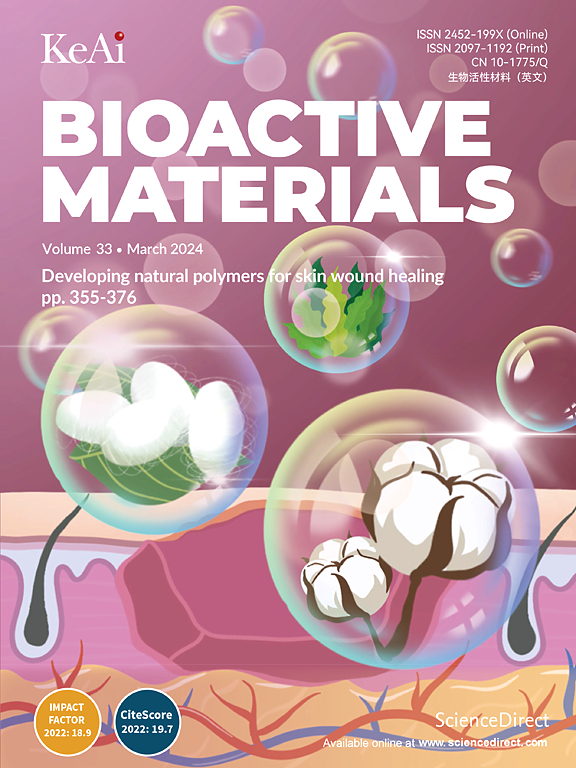Dermal fibroblast-derived extracellular matrix (ECM) synergizes with keratinocytes in promoting re-epithelization and scarless healing of skin wounds: Towards optimized skin tissue engineering
IF 18
1区 医学
Q1 ENGINEERING, BIOMEDICAL
引用次数: 0
Abstract
Skin serves as the first-order protective barrier against the environment and any significant disruptions in skin integrity must be promptly restored. Despite significant advances in therapeutic strategies, effective management of large chronic skin wounds remains a clinical challenge. Dermal fibroblasts are the primary cell type responsible for remodeling the extracellular matrix (ECM) in wound healing. Here, we investigated whether ECM derived from exogenous fibroblasts, in combination with keratinocytes, promoted scarless cutaneous wound healing. To overcome the limited lifespan of primary dermal fibroblasts, we established reversibly immortalized mouse dermal fibroblasts (imDFs), which were non-tumorigenic, expressed dermal fibroblast markers, and were responsive to TGF-β1 stimulation. The decellularized ECM prepared from both imDFs and primary dermal fibroblasts shared similar expression profiles of extracellular matrix proteins and promoted the proliferation of keratinocyte (iKera) cells. The imDFs-derived ECM solicited no local immune response. While the ECM and to a lesser extent imDFs enhanced skin wound healing with excessive fibrosis, a combination of imDFs-derived ECM and iKera cells effectively promoted the re-epithelization and scarless healing of full-thickness skin wounds. These findings strongly suggest that dermal fibroblast-derived ECM, not fibroblasts themselves, may synergize with keratinocytes in regulating scarless healing and re-epithelialization of skin wounds. Given its low immunogenic nature, imDFs-derived ECM should be a valuable resource of skin-specific biomaterial for wound healing and skin tissue engineering.
求助全文
约1分钟内获得全文
求助全文
来源期刊

Bioactive Materials
Biochemistry, Genetics and Molecular Biology-Biotechnology
CiteScore
28.00
自引率
6.30%
发文量
436
审稿时长
20 days
期刊介绍:
Bioactive Materials is a peer-reviewed research publication that focuses on advancements in bioactive materials. The journal accepts research papers, reviews, and rapid communications in the field of next-generation biomaterials that interact with cells, tissues, and organs in various living organisms.
The primary goal of Bioactive Materials is to promote the science and engineering of biomaterials that exhibit adaptiveness to the biological environment. These materials are specifically designed to stimulate or direct appropriate cell and tissue responses or regulate interactions with microorganisms.
The journal covers a wide range of bioactive materials, including those that are engineered or designed in terms of their physical form (e.g. particulate, fiber), topology (e.g. porosity, surface roughness), or dimensions (ranging from macro to nano-scales). Contributions are sought from the following categories of bioactive materials:
Bioactive metals and alloys
Bioactive inorganics: ceramics, glasses, and carbon-based materials
Bioactive polymers and gels
Bioactive materials derived from natural sources
Bioactive composites
These materials find applications in human and veterinary medicine, such as implants, tissue engineering scaffolds, cell/drug/gene carriers, as well as imaging and sensing devices.
 求助内容:
求助内容: 应助结果提醒方式:
应助结果提醒方式:


